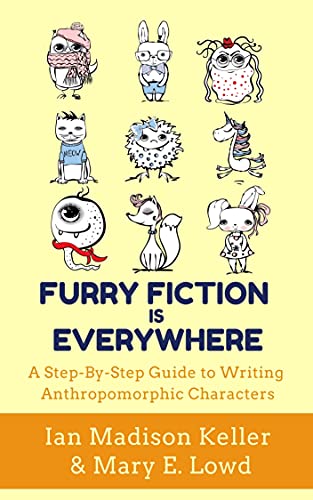Review by Ardy Hart
Furry has been around for a while, but even I, someone who’s been in the fandom for ten years now, didn’t realize how long it’s been in the world. I think that’s because many of us think of furry in the context of the present--fursuits, art, animation, movies, etc. And that’s fair! It didn’t really have a name for a while. But it has existed for quite some time. Mary E. Lowd and Ian Madison Keller do an excellent job in briefing us in the history of furry literature via their book, Furry Fiction is Everywhere: A Step-by-Step Guide to Writing Anthropomorphic Characters. By comparing many different books and myths in furry literature’s history, Lowd and Keller give us a unique and helpful guide to writing just about any furry story you could imagine.
First and foremost, this book is a guide. It’s meant to help those interested in furry literature write and share their stories with the world. After a brief introduction to what furry is, the book shows us what common story parts--such as characters, genre, and world-building--would look like in a furry story. I particularly liked the “Types” section of the guide where Lowd and Keller do a great job at describing the different types of furry stories you can write. Are the animals in the story simply talking pets, describing their lives from their own perspective instead of their owner’s? Or maybe they’re more human-like, uplifted by someone or something to gain human-like intelligence. Perhaps you’ve got that part down, but don’t know how to express emotions using animal characteristics. The guide helps you with that, too. And if that’s not enough, Lowd and Keller provide “Roll-Ups” and checklists to get you started writing, because oftentimes that’s half the battle.
Lowd and Keller did a fantastic job with this guide. It’s well-organized and well-edited. I liked that the introduction broadens the view of furry to encompass types of literature you may not have thought about as furry. Then, once you’re intrigued, it is sliced into bite-sized parts that are easily digestible and fun to read. They also use current pop culture references that help get you thinking. I especially appreciated the Beastars and “Night in the Woods” examples.
This book would appeal to anyone who’s interested in learning how to write furry literature. There’s no real right way to write it, but this guide does a great job at teaching you what to focus on when writing your story.
